Have you just bought your dream snowboard? Does riding it make you feel like a pro already? Did it force you to make it your pastime and learn more about this sport (so you can brag about it)?
If yes, welcome to this history class. If your answer is a ‘no’, raise your hand and sit tight because I couldn’t care less. So, let’s start! Shall we?
First thing first, we all know history is who we are and why we are the way we are. Snowboarding has evolved so much in the past 50 years, and you need to know why because you want to be the next Shaun White. Read on to educate yourself and take over the snowy terrains.
History of Snowboarding
Snowboarding is a snow sport that started back in 1965 in the United States of America. The other continents and countries like Europe and France got fascinated and began holding competitions, which is how the sport became popular. So, let’s dive into it and find the whole story.
1965: The Birth
Can you imagine a 13-year-old girl zipping down snow-covered hills in 1914? One can say snowboarding is the brainchild of Vern Wicklund, a little girl from Cloquet, Minnesota. However, Wickland patented the idea after about two decades by producing a handful of models.
The sport created hype in 1965 when a man named Sherman Poppen from Michigan created the Snurfer by putting together two skis side-by-side and adding a string in the nose for added steering stability. Poppin succeeded in selling one million units by 1970. Amazing!
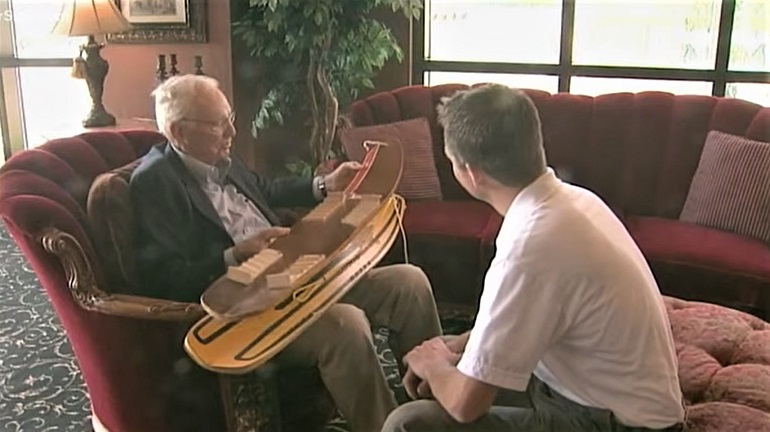
His snurfer was wider than two skis put together and shorter than a regular ski pair. Also, the surface was made anti-slip as there was no concept of bindings back then. I’m also wondering who founded bindings, then? Let’s read further to find it out!
1970s: Bindings and the First Snowboard
The real breakthrough happened at the beginning of the 70s, when a dropout from Cornell University – Dimitrije Milovich, founded the first modern snowboard in 1972.
The Winterstick was built with steel edges, nylon straps for feet, and laminated fiberglass. This modern invention allowed the riders to float through more risky terrains than its predecessors. The National snow surfing championships were also held during the same time.
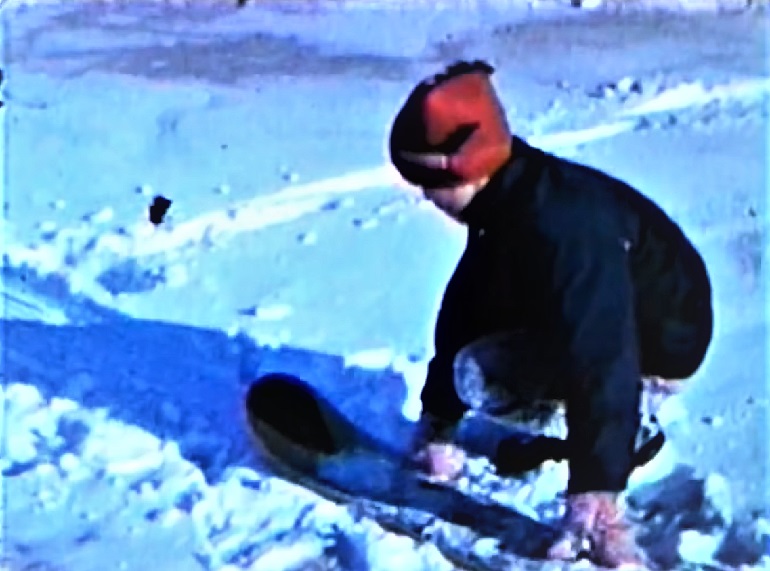
The sport eventually went mainstream, and so many people started experimenting with different ways to make it more user-friendly. Among them were two personalities: Jake Burton Carpenter and Tom Sims, fighting for credits in the mid-70s. Whoops!
New Jersey-raised professional rider – Sims, being involved in skateboarding, was inclined towards aerial stunts than speed. He founded SIMS Snowboarding in 1976.
One year after that, Jake Burton Carpenter, with his enthusiasm for the race, was awarded coining “snowboarding.” but one cannot decide the father, still. Can you? By the way, if you love snowboarding, does his middle name ring a bell?
With the growing popularity and huge success of this game, Annual World Surfing Championships in Michigan started to be held.
In 1979, Burton also participated with a board but not a traditional one. He used his self-made set of bindings instead of a rope with a one-piece board under his feet. What a genius! This way, he won the first ever snowboarding world championship.
1980s: The Production Boom
As snowboarding went famous, people began to translate it as a pastime or a new hobby. It became a thing when national racing events started being held around the country eventually, all the main ski areas were hosting competitions. Many ski companies began manufacturing snowboards in a bid to stay relevant!
Snowboarding in the 80s also faced backlash for insurance liability and rudeness of riders. Thus, most North American ski resorts ended up banning it. However, by the 1990s, almost every resort located in North America allowed riding the snowboard.
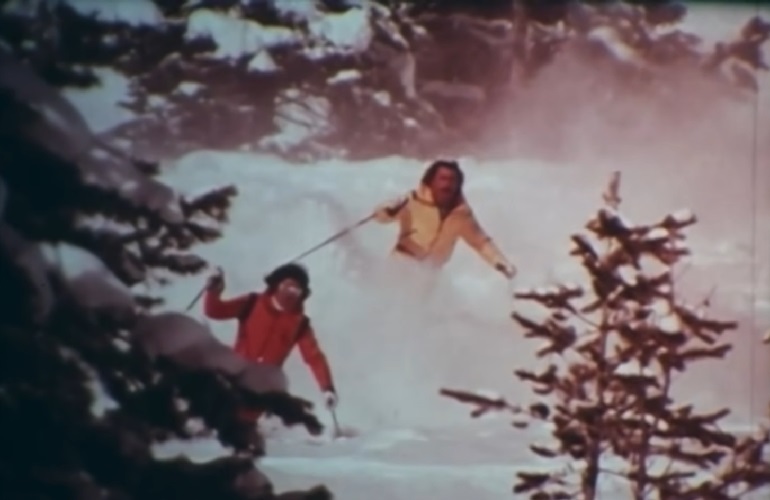
If we talk about its engineering, the new snowboard bindings were simply across the ankles and toes back in 1983. Then Jeff Grell entered the show and made the highback snowboard bindings, the design we know today. Well, that was the very first time snowboards were able to ride on hardpack.
Another addition to bindings was metal edges in place of conventional surf fins, which transformed the snowboard into a carving board. In short, throughout this decade, the snowboarding sport kept on growing with new additions to its accessories to the point that colleges started offering this sport as a club sport.
1990s: Golden Age
Snowboarding reached its peak in the 90s, that is why we call it its golden age. In this decade, it became so popular that professional skateboarders and surfers started entering the realm of snowsport.
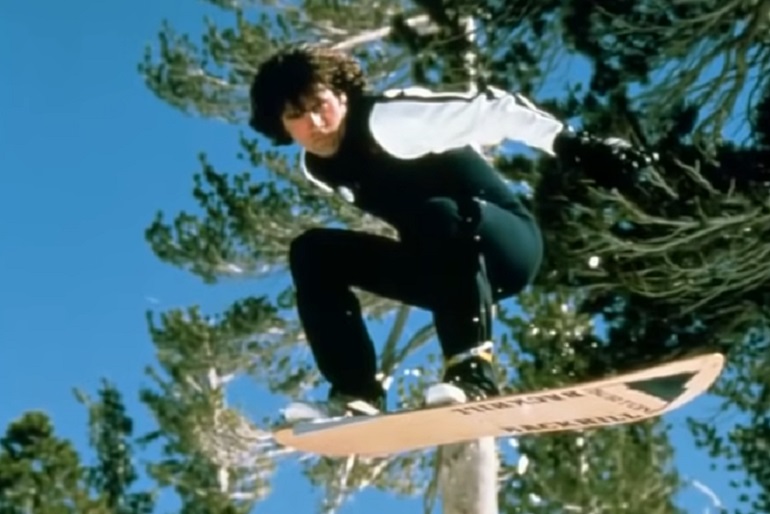
Over 50 snowboard brands were producing and selling equipment by 1993. However, ‘Ride’ was the first company to go public in 1994. By the time, the material, construction, quality, and technology evolved, add in, the shapes, camber, and edges. In that decade, one could find a board to fit any kind of terrain and style.
It is also the same decade that witnessed snowboarding becoming an official Olympic sport in 1998 at the Nagano Olympics Japan.
2000s: Ascent or Descent Time?
In the early years of the 2000s, snowboarding was being carried with the same enthusiasm as it used to be in the 70s and 80s. Also, it had become a regular sport in Olympics.
However, things started to change as resorts stopped seeing as many snowboarders anymore. The reason behind it was the image sketched by the early pioneers of this sport – cocky attitude, with baggy pants, and hats. The image never changed, and people started to back off, as it didn’t appeal to youngsters and adults.
But the snowboard gear made for the new generation was aesthetically and functionally more appealing than ever. One can say that snowboarding is here to stay. There is always a downturn in everything, but it doesn’t last forever.
Snowboarding Equipment Has Changed Recently
If you want to picture a scene from old mags about snowboarding, imagine a bright-colored snowboard being ridden by a man in some baggy snowboard pants.. Companies in the 80s and 90s were producing snowboards with a specific attitude to stay relevant.
But as this sport gained popularity, money started pouring in, and the engineers grabbed their sketchpads and started sketching boards about the needs of the new riders with new attitudes and requirements. Hence, the snowboards got fatter and longer to comply with the new needs of customers.
That’s the very reason we can now raise snowboards ranging from sleek simple snowboard designs to the most heavily engineered pieces.
So, during its evolution, resorts also began building snowboard parks with halfpipes and professional jumps. They advanced by putting in logs to imitate the rail surfaces the riders love to slide.
Firstly, the engineers made progress in defining categories like advanced, intermediate, and beginner boards, but suddenly it got more than that.
There were boards available with giant cambers for carving groomers, others with flat bottoms for skate-style stunts. While others with heavy rockers for better floatation. This is how the modern snowboard was born.
Besides changing the shapes, cambers, and profiles, companies also diverted their attention to the material used for construction. Snowboard manufacturers started incorporating different core materials throughout the profile from nose to tail and applied strategic construction principles.
Just so you know, the ski industry also had a great role to play in snowboarding- the invention of a split board. If you want to explore more designs and find your type, check out how to choose a snowboard.
How Technology Is Changing Snowboarding
The market is saturated with different types of snowboards offering different features. These boards have come a long way from being mere hacksawed pieces of wood to becoming high-tech gadgets. Together, all the advancements promise a revolutionized snowboarding experience for the coming generations.
Let’s have a look at what kind of advancements are being made to this snow sport.
Smart Phones
You read it right! Smartphones are becoming a necessary accessory of modern life, therefore, they are also becoming a useful gadget for snowboarders.
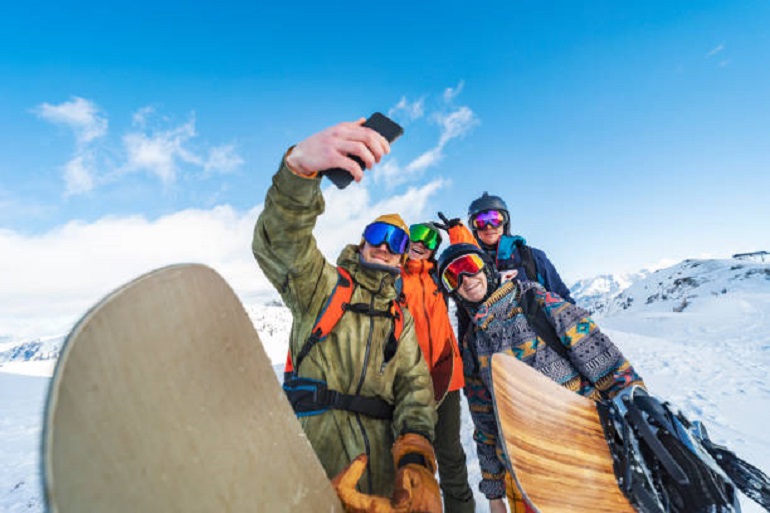
Do you wonder how? Snowboarding legend – Burton and Nokia are collaborating to create a technology that monitors snowboarders’ stats. They have put sensors on the snowboard and the rider that record velocity, heart rate, board alignment, and compression.
The collected data is then transferred to the rider’s phone, which gives feedback on the ride. Riders can also use DCIM software for their data management.
Another example is the tech company Creveo. This manufacturer has created bindings that use Bluetooth to track speeds and weight allocation.
Moreover, LED lights have been incorporated into the snowboard bindings for easy communication with the other riders. This can be used to send signals or alert notifications. One can say, snowboard technology has changed and making rapid progress in enabling the riders to access their abilities in a different way.
Rockers
Another groundbreaking advancement is the invention of new rocker-camber technology.
The underlying principle of this tech is to make the board versatile. Such snowboards use lightweight, smaller, and such boards that combine the alternating points of firmness and flexibility for a better floating experience on snow without edge catches.
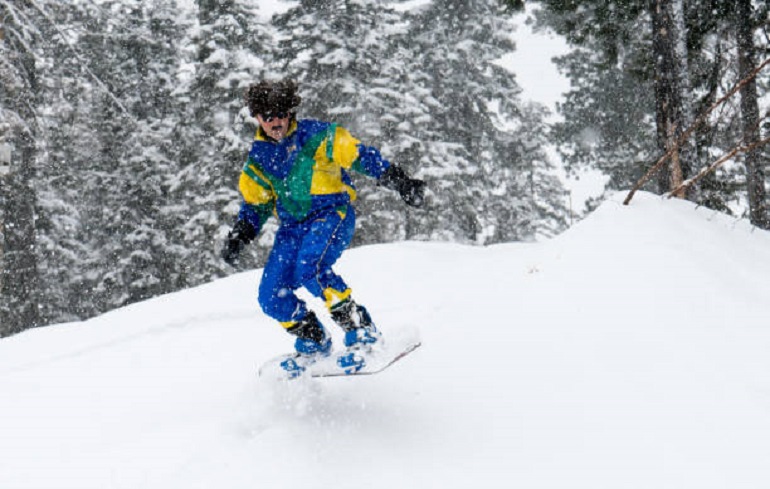
The versatility of the snowboard allows the rider to use only one board for multiple styles. So, rather than having different boards for different purposes, now one can easily utilize a quality rocker-camber combo snowboard for carving groomers, tapping the backcountry, and going downhill all they want.
The best thing is, such boards are also suitable for beginner women snowboard riders. Wow! Hey newbies, you need not buy multiple boards and bindings to find your style. Another good news is this combination advocates deeper side-cuts and suitable strength distribution along the length to tackle speed bumps more efficiently.
This high performance is made possible by the slightly elevated nose and tail. The terrific profile of the snowboard allows you to explore fresh snow or deep snow if you want just riding without catching snow.
So, are you ready to try this new tech and receive a surprise?
Gear
This game has come a long way from its origin of two wooden pieces bound together to a high-tech snowboard. However, the advancements aren’t made only on the boards, but also the other snowboarding gear like jackets, goggles, helmets, etc.

Two of those dopest gadgets are concerning safety. One is Flaxta behold Back Protector, and the other is the Roam Elevate Exoskeleton. The back protector is a vest with a Nitrile Butadiene Rubber panel built into it, which provides protection from spinal injuries.
The exoskeleton is used for knee protection and to disperse harmful impacts without being too rigid. It also provides 20 pc more strength to your legs.
The gadget is computerized and comes with lithium-ion batteries and an air compressor, both fit into a backpack. This is mainly being used in skiing, however, many professional snowboarders are seen using it for the sport.
The tech operates with the help of sensors that are attached to the body of the wearer and communicate with the exoskeleton.
So now you know how has snowboarding changed over time. Technology is making this sport easier, more fun, and safer.
How Have Snowboards Changed Over the Years
We have come a long way. The good part is that we are now living in the prime age of snowboarding. We made progress from a skateboard to laminated wooden bases, and today we ride impeccably engineered pieces that allow you to ride whenever wherever.
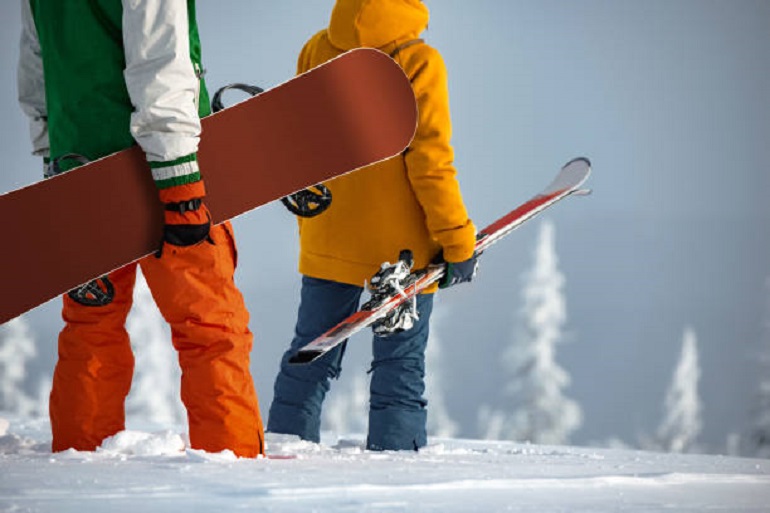
Here I have compiled a brief list of different terrific snowboards that allow you to fly in snow.
Bataleon Surfer
Let me try to summarize it for you, this beast trespasses the ‘enough is enough’ tape when it comes to mocking the traditional shapes of the boards. This King of float, with its unmistakable silhouette and aggressive sidecut, is great for gliding and slashing the deep or fresh powder.
Its shovel-like nose finely molds into a swallow tail. The premise is to increase float and decrease the back leg burn chances.
Jones Mountain Twin
If you are looking for the best do-it-all snowboard, then splurge your stash on the Jones Mountain twin Snowboard. Yes! The board can do a little of everything, so isn’t it worth buying when you can afford to buy only one?
The snowboard offers a good directional float in powder, massive stability over slopes and chunder, good turn initiation, and a superb carving experience. And for this price point, the board is super fast too.
Burton Custom Flying V
This top all-mountain snowboard, with its stiff flex of 8 out of 10, the board doesn’t feel too aggressive. Rather forgiving, nimble, and fun at slower speeds. However, it is not the nimblest deck one can say.
One can opt for it if they want a snow craft to carve in all conditions yet show a better float attitude in powder. It also offers good pop and fine edge-to-edge speed.
Final Thoughts
After about 50 years, now snowboarders can cherry-pick the top snowboard that fits their style, abilities, and even aesthetics. Even more, one can buy multiple boards built for different styles and go on a ride as per their mood for that particular day. Congratulations moneybags!
Given so many options, one cannot consign him or herself to a specific snowboard. Now we buy and ride the most individualized snowboards ever, and ace the concerned terrains by fully expressing ourselves. I’m glad I was born in this age as I got to ride the most exquisite pieces!!
0 Comments